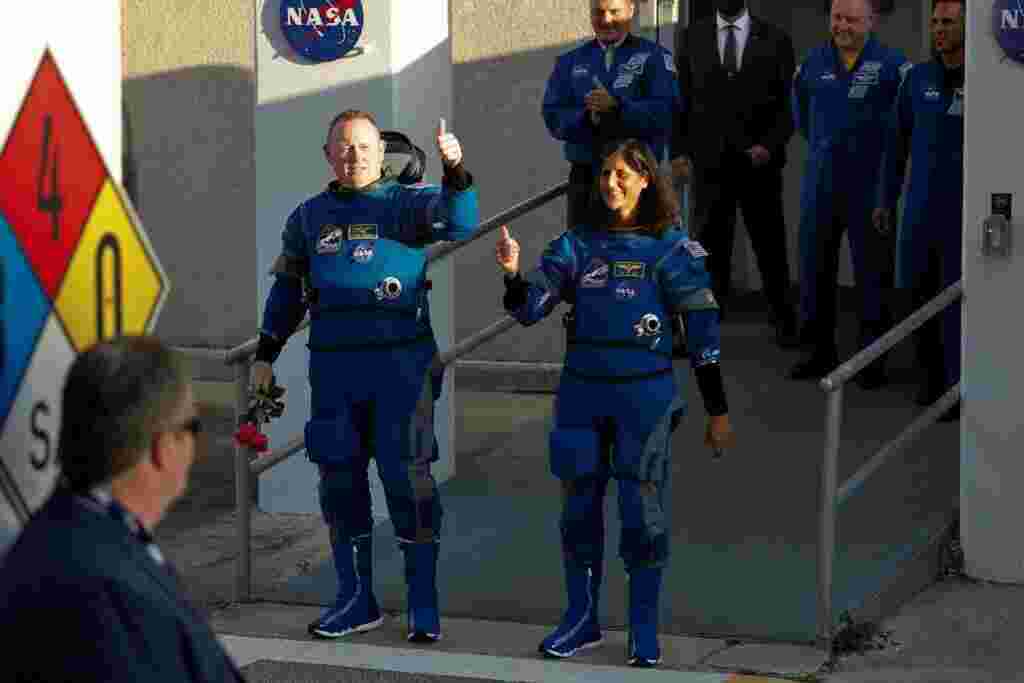NASA and Boeing Face Challenges Bringing Astronauts Back to Earth
Geoff Bennett: NASA and Boeing are grappling with how best to bring two U.S. astronauts back to Earth. Originally planned to last just eight days, leaks and other technical issues suffered by Boeing's Starliner spacecraft on its way to the International Space Station have delayed the planned return flight by more than two months. And that has left its two astronauts, Butch Wilmore and Suni Williams, stuck in space.
To help us understand what it all means, we're joined now by our science and aviation correspondent, Miles O'Brien. Miles, it's always great to see you. So what went wrong with the Starliner?
Miles O’Brien: Well, there were signs of trouble from the get-go, Geoff. There were helium leaks on the launchpad. NASA and Boeing huddled. It would have required a significant delay, a rollback to the hangar to do the work to try to fix those leaks. Helium is a very difficult thing to track down. But they still decided to launch.
In retrospect, maybe that wasn't a great idea because once they got in orbit, the helium leaks persisted. And then as they approached the docking phase at the International Space Station, seven thrusters, which guide it, the capsule, through the void of space, failed inexplicably.
And so at the bottom of the ledger here, the engineers are scratching their heads still. They don't know if the helium leak is linked to the failed thrusters. They don't know the root cause. They have been testing hardware on the ground, throwing switches remotely in space, and they still don't understand it. And that's what has given them great pause on whether to put those two astronauts into Starliner and have them return to Earth in it.
Geoff Bennett: So, one backup option, as I understand it, is that they could hitch a ride on a SpaceX craft. But that wouldn't be until next year. Is that right?
Miles O’Brien: Well, here's how this goes. The SpaceX Crew-9 mission was scheduled to launch on Sunday with four astronauts — two astronauts and two cosmonauts aboard. And that has been delayed. It's quite possible the scenario could play out where two of those individuals, we don't know who, will be told to sit it out, stay home, the SpaceX comes up to the International Space Station carrying the spacesuits required, and two empty seats, which Butch and Suni would take home.
But, in order to do that without disrupting things too much, they would essentially be drafted onto that crew and would be absorbed as part of that crew, and thus would stay up there until February, as the two astronauts who remain on the ground would have.
Geoff Bennett: So we should say that Williams and Wilmore, these are two veteran space explorers. Has NASA said anything about how the two of them are faring, how they're holding up, and if they have enough supplies to sustain being up there for months longer?
Miles O’Brien: Well, the space station is pretty well stocked, but I should point out, Geoff, that they — at the last minute, they put in a urine-water recycling system inside the Starliner capsule, which had failed, and they asked Butch and Suni, would you mind not bringing any additional clothing? And so where they would have had their suitcases, this urine recycler sits, and so they're up there with one set of clothes. Now, there's a cupboard full of clothing there, so they are doing OK, and there's plenty of food and everything else. There's no reason to be concerned about them on the station.
Geoff Bennett: What's this all mean for Boeing, Miles, and Boeing's relationship with NASA?
Miles O’Brien: Well, Boeing's relationship with NASA goes right back to the beginning. If you look at its predecessor organizations, the company built the Mercury and Gemini capsules, the Apollo capsules, the Saturn V rocket, the space shuttle orbiter, and, for that matter, the space station itself. So it's hard to imagine them reaching some kind of separation or divorce down the road. But this is a serious setback. And NASA wanted to have two operative spacecraft from two separate contractors to get to low-Earth orbit, and right now they can only rely on SpaceX.
Geoff Bennett: So, at this point, it's safe to say we don't precisely know when these two astronauts will be able to return home?
Miles O’Brien: I suspect, this time next week, toward the end of next week, we're going to know. And NASA is going to continue looking at this. They're going to create some 3-D modeling of these valves that are failing, trying to fully understand it. But, at this juncture, it's going to be hard for them to develop the confidence they need to strap those two astronauts in.
Boeing insists that the tests have been done and the spacecraft is safe. But all of the people making the decision here, NASA and Boeing, lived through the tragedy of the Columbia loss more than 20 years ago now. And no one wants to repeat that. No one wants to make a decision when the hardware is sort of screaming out to you saying, something's wrong, but they don't know just what it is.
Geoff Bennett: Miles O'Brien, thanks, as always. Appreciate it.
Miles O’Brien: You're welcome, Geoff.
NASA weighs options for bringing stranded astronauts home amid Boeing spacecraft problems
NASA and Boeing are grappling with how best to bring two U.S. astronauts back to Earth. Originally planned to last just eight days, leaks and other technical issues suffered by Boeing's Starliner spacecraft on its way to the International Space Station ha

